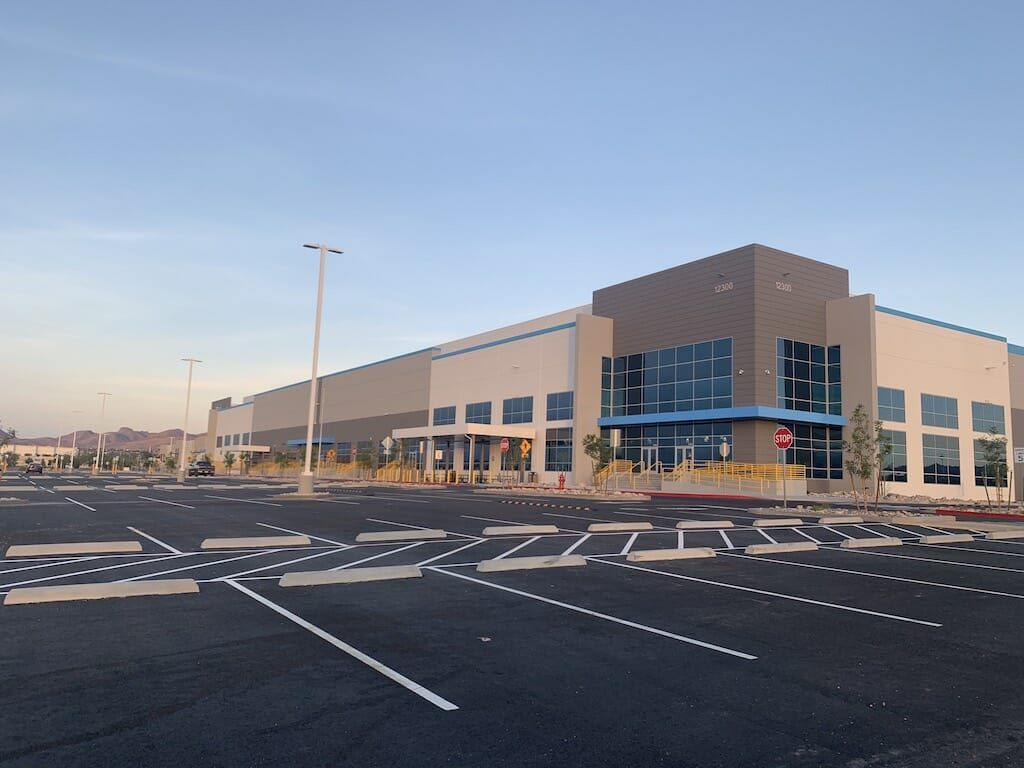
Las Vegas, Your Asphalt Maintenance Summer Checklist Is Here!
 An effective maintenance program can often more than double the useful life of asphalt pavement. Although you should pay attention to your pavement during every season, summer is an especially good time to evaluate your asphalt pavement and have your contractor address any issues. Asphalt companies have found that specific procedures are more likely to yield the best results when temperatures are high, and there are more hours of daylight. The following checklist can help you determine the asphalt maintenance procedures that you need.
An effective maintenance program can often more than double the useful life of asphalt pavement. Although you should pay attention to your pavement during every season, summer is an especially good time to evaluate your asphalt pavement and have your contractor address any issues. Asphalt companies have found that specific procedures are more likely to yield the best results when temperatures are high, and there are more hours of daylight. The following checklist can help you determine the asphalt maintenance procedures that you need.
When Was Your Last Parking Lot Reseal?
Asphalt sealcoating is one of the most effective, economical, and critical procedures you can choose to ensure that your pavement reaches its expected longevity. Sealcoating blocks the harmful ultraviolet rays that make asphalt pavement brittle and dry, accelerating deterioration and increasing the cracks’ likelihood. The UV rays also turn the color of asphalt from a rich black to an unattractive brown or gray; sealcoating can restore the original color. Sealcoating also helps protect against damage from hot tires, automotive fluids, and moisture penetration. Most asphalt pavements in the Las Vegas area need fresh sealcoating about every two years. If it has been longer than that since your last parking lot reseal, you should schedule it. However, even if your pavement has been sealcoated within that time, you may still need a fresh application. If the pavement color has faded, you find that the sealant has cracked or flaked away, or you find that heavily traveled areas have had the sealcoating worn away, you should contact your contractor.
Why Is It Better to Sealcoat in the Summer?
Sealants need to be exposed to several hours of sunlight to cure correctly. Furthermore, most asphalt pavements need two coats of sealant, but the second coat cannot be applied until the first coat has dried sufficiently. The longer days and higher temperatures of summer expedite the curing process, often allowing your contractor to apply both coats of sealant and your parking lot line striping on the same day.
Are Your Stripes and Pavement Markings Vibrant and Undamaged?
Parking space stripes, road markings, and parking lot pavement markings must be highly visible if they are meaningful. Although many people delay repainting their markings until they need to sealcoat, the harsh sunlight in the Las Vegas area can sometimes fade paint in as little as one year, especially in heavily-trafficked areas. It would be best if you had fresh paint applied when markings lose more than 25 percent of their original vibrancy. When inspecting your pavement, pay special attention to ADA markings, crosswalks, and other critical markings.
Why Is Summer a Good Time for Parking Lot Line Striping and Marking?
Like sealcoating, paint cures faster during hot weather. This can be particularly important if you are also having your pavement sealed. Faster drying times allow you to reopen your parking lot to traffic sooner, reducing any inconvenience to your guests, employees, and customers.
Are There Significant Cracks in Your Asphalt Pavement?
Eventually, all asphalt pavements will crack. Open cracks allow dirt, automotive fluids, and moisture to penetrate beneath the surface and inflict damage to the underlying structure. As a rule, you should have your contractor repair any cracks that are more than about an inch deep or a half-inch wide. Without repair, the cracks will continue to expand, increasing the likelihood of a costlier repair.
Why Is Summer a Good Time to Repair Cracks in Asphalt Pavement?
Asphalt pavement is flexible, so it expands in hot weather and contracts in cold weather. During the summer, cracks should be at their maximum expansion. When fill material is introduced into a crack that is not at its maximum expansion, there is a possibility that the filler will crack or lose its bond with the sides of the void when maximum expansion does occur.
Are There Stains on Your Asphalt Pavement?
Most stains on your pavement will come from oil, power steering fluid, gasoline or diesel, transmission fluid, or brake fluid. Inevitably, some vehicles that park or drive on your pavement will leak some petroleum-based liquid. Many people do not realize that these petrochemicals will interact with the binder in asphalt pavement. The pavement becomes soft, crumbly, and easily damaged. Sealcoating slows the penetration of automotive fluids, but it will not stop completely; given enough time, automotive fluids will eat their way through the sealcoating, so these fluids should be removed.
Why Is Summer a Good Time to Clean Automotive Fluids That Are on an Asphalt Pavement?
Many stains require multiple attempts to remove them. During the summer, the heat helps the treated area dry faster so that you can tell whether you need to perform additional cleaning. Also, the longer hours of sunlight allow you to clean more stains on a single day.
We Can Help
Affordable Striping & Sealing serves clients throughout the Las Vegas area with superior asphalt maintenance and exceptional customer service at affordable prices. Our services include road marking, sealcoating, parking lot design, asphalt crack repair, bumper block, and traffic sign installation, and ADA markings. Contact us for a free quote by completing the online form or calling 702-222-9009.



